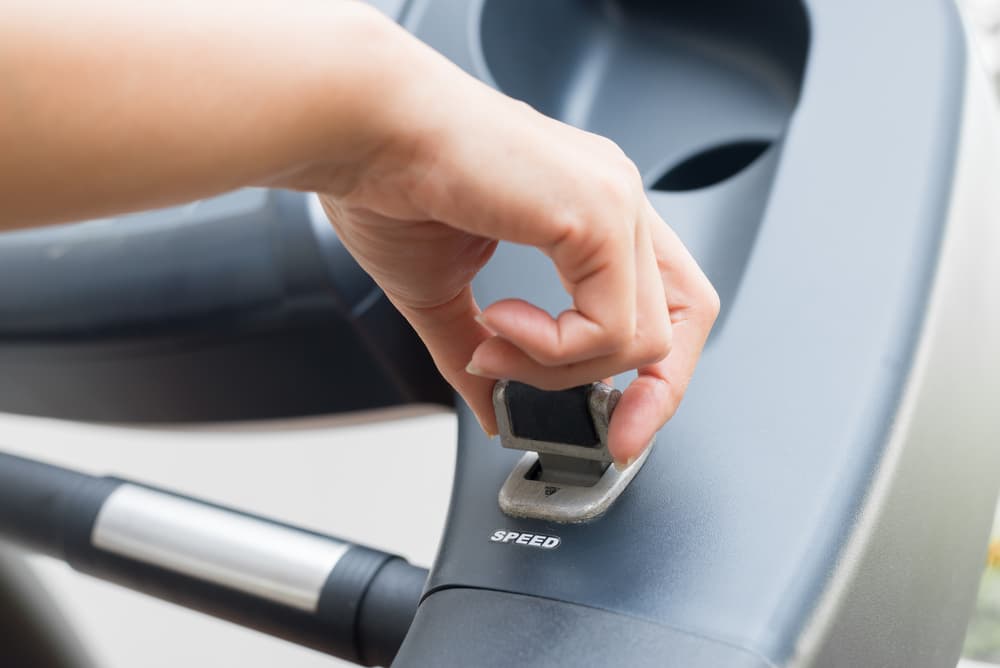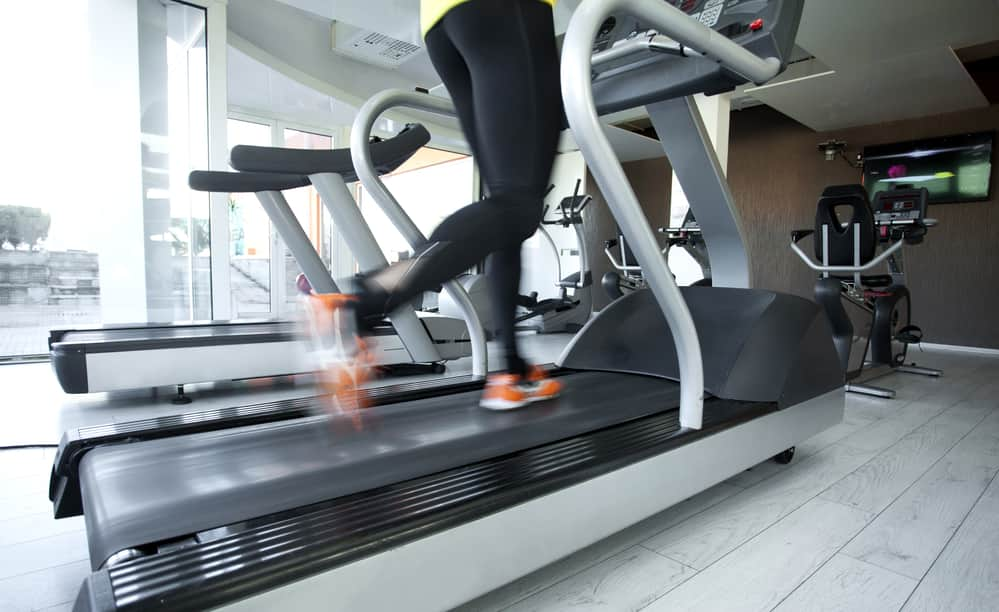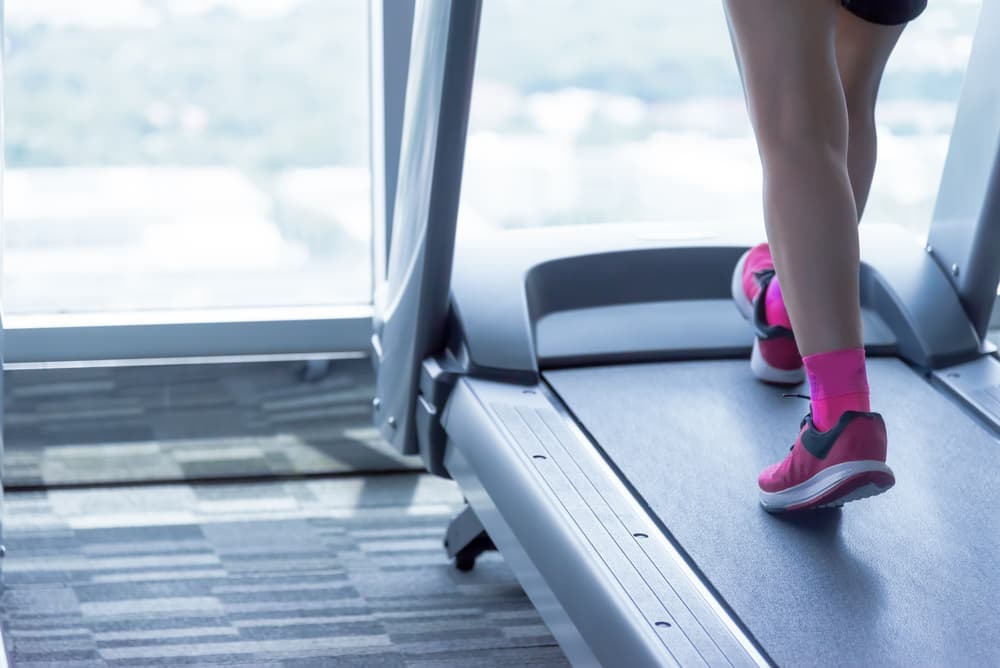Is a treadmill your go-to fitness partner? You probably asked yourself what is better on treadmill: incline or speed? After all, we want to optimise our workouts and get the most benefits.
Adding either incline or speed to treadmill routines is good, whether you’re a beginner or advanced runner. Experts agree that both can enhance caloric burn, endurance, leg strength and more. But choosing which is best depends on your fitness goals.
Are you preparing for a competition? Do you aim to build muscle? Or perhaps, you want to lose weight faster.
All these affect our treadmill settings and exercises.
Keep reading to learn what makes incline different from speed. Then, let’s match their distinct benefits to your health goals.
That way, you’ll know which of the two should be incorporated more into your routine.
What’s the Difference between Treadmill Incline and Speed?
Differentiating the two will help us answer the question of what is better on treadmill: incline or speed. Let’s compare them based on their advantages.
Treadmill incline
Most modern treadmills have adjustable incline levels in percentages. When you adjust it, the running deck surface will angle upward.
Walking or running at an incline pushes your legs to stride higher than usual, making your workout more challenging.
Each treadmill model has different incline settings. Some can go as high as 40%, like the NordicTrack X22i Incline Trainer. This model has a -6% decline for downhill training, too.
Adjusting the treadmill incline has several benefits, such as:
- toned lower-body muscles
- improved speed and endurance levels
- better workout level diversity
- enhanced caloric burn
Here’s an example to emphasise the benefits of incline on burning calories.
A 68-kg individual walking on a flat treadmill at 6 km/h can lose 8.5 calories per minute.
But adding a 5% incline at the same speed can boost his caloric burn to 10.2 calories per minute.
Treadmill speed
Any basic treadmill model has an adjustable speed feature. However, speed limits vary depending on the unit.
Like walking or running at an incline, a faster treadmill speed pushes your legs to work more. In turn, your heart rate increases, allowing you to burn calories.
Adjusting the treadmill speed also has several benefits like:
- higher heart rate and caloric burn
- improved stamina and endurance levels
- better performance at higher incline settings
- enhanced running cadence

What is Better on Treadmill: Incline or Speed?
Now that we know the difference between the two and their benefits, we can match these settings to your fitness capacity, goal and preference.
Here are some aspects to consider.
Add incline for weight loss
Increasing the intensity of your workout is key to successful weight loss. And you can quickly achieve this by adjusting your treadmill incline.
Compared with exercising on a flat deck, your body needs to work harder when walking or running uphill. The extra effort results in an increased heart rate, too.
In turn, these lead to caloric burn that you need to lose weight and body fat effectively. Moreover, you burn more calories as you increase your incline settings.
To understand this better, here’s a comparison table of an 83-kg person walking, jogging and running on a treadmill for 30 minutes.
| Treadmill Exercise | Incline Level | Calories Burned |
| Walking (4.9 km/h) | 0% | 250 |
| 2% | 268 | |
| 6% | 305 | |
| Jogging (8 km/h) | 0% | 376 |
| 2% | 406 | |
| 6% | 466 | |
| Running (10.4 km/h) | 0% | 476 |
| 2% | 515 | |
| 6% | 593 |
Here, we can see that increased incline leads to more calories burned. When you adjust to a faster treadmill speed, calorie expenditure becomes higher, too.
These values further stress fitness experts’ advice that interval training or high-intensity bursts with low recovery periods help with weight loss.
Focus on speed for outdoor race preparation
If you’re an experienced runner, doing speed drills on a treadmill will increase your chances of winning a marathon. It can help boost your athletic confidence, too.
Speed drills can prepare your body for outdoor running with lower injury risk or muscle soreness.
One study showed that focusing on speed enhances the performance of distance runners.
Researchers of the same study also concluded that training values are better on a level-grade route than on uphill training.
Of course, the intensity and frequency of your speed drills depend on your sport or competition requirements.
But if you want to do this, the rule of thumb is to run faster than usual for a short interval.
For example, if your usual running pace is at 9 km/h, try increasing it to 12 km/h for 10 to 20 seconds.
Afterwards, go back to the 9 km/h setting for a 2-minute recovery time before boosting the speed again.
Alternatively, you can also stick to your usual running pace for an extended period.
For instance, work out at 9 km/h for 2 minutes before slowing down for a 2-minute recovery time.
Ideally, complement your treadmill runs with outdoor training to acclimatise your body to terrain and weather changes.

Go for incline training to build and tone muscles
The belt does most of the work for you when running fast on the treadmill. That means your muscles are not as active either.
However, the load on your leg muscles is different as you propel your body upward.
Incline walking or running results in higher leg muscle activation, particularly your glutes, hamstrings and calves.
You can try this by doing a quick walking pace at 5.6 to 6.4 km/h. Next, increase the incline to 5-7%. Hold on to the handrails for balance if needed.
But once you get used to it, let go of the handrails and swing your arms instead to keep your muscles engaged.
Create an incline interval routine when ready to make it more challenging.
If you’re a beginner, start at a slower pace with a moderate hill and flat recovery, then gradually progress.
(Don’t forget to check out our excellent page on how to improve your fitness routine with these 5 treadmill workout tips for beginners.)
Remember, working out with a high incline too soon might also result in injuries like shin splints, plantar fasciitis and knee pain.
Try training uphill to reduce the risk of injury
The good thing about using the treadmill incline is that you can intensify your workout while lessening the impact on your joints.
Incline training can help athletes recover while staying active. It’s also ideal for regular gym-goers who prefer using the treadmill for intense and low-impact exercises.
Exercising at an incline is also more controlled than running at fast speeds, which is safer for people with balance issues.
There are contraindications, though. For instance, incline training can exacerbate knee or lower back pain.
In this case, you might want to exercise on a lower incline or stop it for a while.
Conclusion
Both treadmill incline and speed are excellent workout add-ons. Specifically, they make monotonous routines more exciting and challenging.
However, these two elements produce different effects. And so, it’s a must to match your treadmill settings to what you want to achieve and what your body can do.
Whichever you choose, make sure to start slow and progress gradually. Give your body time to adjust to a new incline or speed level.
More importantly, avoid overdoing it. Try incline or speed training once or twice a week. Then, do it more frequently once your body is ready.
Are you looking for a new treadmill with the right speed and incline level? Check out my top treadmill selections and see which unit suits your fitness goals best.

Related Questions
1. What is the highest speed on a treadmill?
Speed varies based on the treadmill model or brand. Budget-friendly treadmills, for example, have a top speed of 13 to 16 km/h (or 8-10 mph). Mid-range machines have a max speed of 19 km/h (or 12 mph). Still, others can go as fast as 24 km/h (or 15 mph). Your choice should depend on your tolerance and preferred workout.
2. Does walking on an incline burn belly fat?
Running on a treadmill for 30 minutes five days a week can lead to weight loss. When you complement this routine with consistency and a good diet, your belly will naturally shrink within 4 to 6 weeks. But if you adjust the incline, core muscle engagement and caloric burn become higher, too. Consider doing abdominal exercises on the treadmill as well to get toned abs.
- What Are the Advantages and Disadvantages of Folding Treadmills? - 11 March 2025
- Can You Use a Massage Gun When Pregnant? - 10 March 2025
- What is the Best Pre-Run Food? - 6 March 2025
